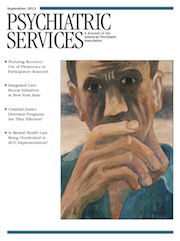The Diagnosis of Anger as a Presenting Complaint in Outpatient Medical Settings
Abstract
Objective
This study examined the diagnostic patterns for individuals presenting with a complaint of anger.
Methods
The study examined the rates of psychiatric diagnoses in a nationally representative sample of visits (N=1,005,628) to outpatient medical settings by adults who presented with a complaint of anger. Data were from the National Ambulatory Medical Care Survey and the National Hospital Ambulatory Medical Care Survey from 1998–2008.
Results
Anger accounted for .14% (N=1,146) of the presenting complaints among all adults and was associated with being uninsured, Medicaid enrollment, Caucasian race, male gender, and younger age. Eighty-four percent of visits with an anger complaint included a psychiatric diagnosis, with 44% of diagnoses characterized as “not otherwise specified.”
Conclusions
Individuals who presented with a complaint of anger received a range of conventional mental health diagnoses. These findings suggested a pattern of diagnosis of a presenting complaint of anger that may encourage inadequate or improper treatment.



